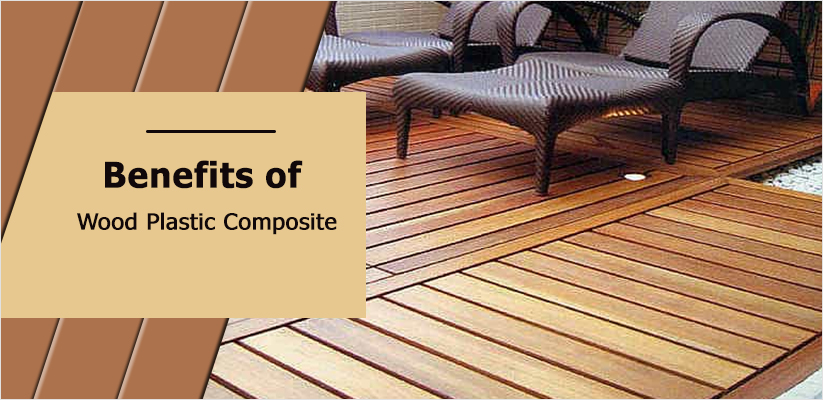


Is WPC Decking the Future of Outdoor Living Spaces?
Table of Contents
1. Introduction
2. Advantages of WPC Decking for Outdoor Living Spaces
3. Potential Drawbacks of WPC Decking
4. Trends Shaping the Future of Outdoor Living Spaces
5. Conclusion
Abstract
Experience the revolutionary world of WPC decking, the ideal solution to enhance any outdoor living area. Renowned for its exceptional durability and aesthetic resilience, WPC decking is a top pick among those searching for longterm outdoor living solutions. Perfect for any environment and climate condition, WPC deckings ability to endure exposure makes it ideal for gardens and patios as stylish yet functional retreats.
Introduction
WoodPlastic Composite WPC decking promises to revolutionize outdoor living spaces and is quickly becoming one of the goto materials for homeowners seeking relaxing yet attractive outdoor living areas. Homeowners seek innovative solutions that enhance their environments without compromising style, sustainability or maintenance needs WoodPlastic Composite decking WPC is set to revolutionize this sector of the market.
Advantages of WPC Decking for Outdoor Living Spaces
Durability and Longevity
WPC decking stands out for its impressive durability. Engineered to withstand weather elements, WPC is built for this environment. WPC decking stands up well against rot, stain and mold In contrast with traditional wood, which decays over time, WPC decking resists common outdoor threats without needing as much upkeep. Weatherresilient Capable of withstanding various climates from extreme UV exposure to freezing temperatures without degrading over time. Longevity WPC decking tends to outlive traditional wood decks in terms of longevity, maintaining both its structural integrity and appearance for many years to come.
Low Maintenance Requirements
WPC deckings low maintenance needs make it an attractive selling feature No need for staining and sealing composite material doesnt require regular treatments like wood. Simple to Clean For most products, simple soap and water cleaning should suffice in keeping their appearance. Resistance to fading Highgrade WPC decking can resist fading and significantly decrease maintenance efforts by keeping its color and finish unaffected. This also means less effort will need to be expended on keeping up with its care and upkeep requirements.
Environmental Sustainability
WPC decking contributes positively to environmental sustainability efforts Use of recycled materials WPC decking can often be made using recycled wood and plastics, helping reduce waste while encouraging material reuse. Ecofriendly manufacturing processes Many manufacturers prioritize ecofriendly practices in order to minimize environmental impact. End of life recycling WPC offers many advantages over traditional wood, as it can often be recycled after its lifespan has ended, saving it from ending up in landfills.
Aesthetic Versatility
WPC decking offers not only practicality, but also aesthetic flexibility Wide range of colors and textures With options that replicate natural wood grains or can accommodate any design aesthetic. Customization Options Manufacturers have the flexibility to tailor WPC decking products to meet specific aesthetic preferences, expanding its appeal among a wider spectrum of consumers.
Safety Features
WPC Decking Wood Plastic Composite Decking offers several advantages for safety Slipresistant Many WPC decking options have been specifically engineered to be slipresistant, making them safer during wet conditions. SplinterFree Material Our composite material doesnt splinter, making it the safer choice for families with young children and pets. Fire resistance Some WPC decking materials have been designed to offer extra fire safety features, providing another layer of protection.
Potential Drawbacks of WPC Decking
Higher Initial Costs
Initial Costs can Be Higher Due to its materials and manufacturing processes, initial investment costs for WPC decking may be higher than traditional wood alternatives. Costbenefit analysis WPC decking may be more costeffective in the long run when considering maintenance and replacement costs, making its purchase an economical choice in terms of overall savings.
Higher Initial Costs
WPC decking may absorb heat in direct sunlight, becoming uncomfortable to sit on in hotter climates. To combat this potential heat retention problem, insulation materials like wool can be installed beneath WPC decking to increase insulation properties and provide cooling relief in direct sunlight.
Environmental Issues
Plastic use While WPC uses recycled plastics, its environmental impact remains an issue for some customers. Recycling challenges Not all WPC decking is equally recyclable depending on its composition of polymers and manufacturing processes used.
Color Fading and Aesthetics Over Time
UV Exposure Some lowergrade WPC decks may show signs of fading when exposed to extended sunlight, which could ultimately result in premature fading.
Trends Shaping the Future of Outdoor Living Spaces
Rising demand for sustainable building materials
As environmental concerns increase, demand for ecofriendly building materials such as WPC decking is expected to increase accordingly.
Technological Innovations in WPC Decking
Material science advances have resulted in everimproving performance and aesthetic qualities of WPC decking, making its use increasingly appealing and costeffective.
Lifestyle Changes and Outdoor Living
Due to increasing consumer preferences for homebased recreational spaces, durable yet low maintenance materials such as WPC decking are expected to gain in popularity.
Conclusion
WPC decking represents an incredible advancement in outdoor living solutions, combining durability, aesthetic appeal, and environmental sustainability into one sustainable material that may become the leader among decking materials in future projects. Ideal for both new constructions and renovations alike, WPC decking makes an appealing option to create beautiful longlasting outdoor spaces that last a lifetime.
 Previous
Previous  Next
Next